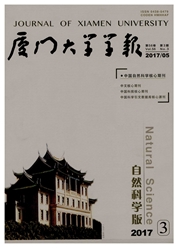

 中文摘要:
中文摘要:
采用现场走航数据与站点观测数据分别对台湾海峡及其邻近海域的高(1.1km、每天)、低(9km、月平均)时空分辨率遥感AVHRR MCSST和PFSST产品进行检验.结果表明,MCSST和PFSST产品与两种现场资料在时空变化趋势上都有着很好的一致性,相关系数的平方(R^2)在0.68以上,高分辨率MCSST精度为(0.11±0.97)℃,与美国沿岸海域验证精度相当。达到当前国际上利用NLSST算法反演LAC数据所能达到的水平.虽然低分辨率PFSST在探测强烈的温度梯度时存在不足,趋向于削弱实际的温度锋.但总体来看,AVHRRSST遥感数据可适用于分析台湾海峡及其邻近海域温度场的时间变动趋势及空间变化特征.
 英文摘要:
英文摘要:
To estimate the accuracy of remote sensing SST in Taiwan Strait and its vicinity, the high (1.1 km, daily) and low (9 km, monthly) spatiabtemporal resolution remote sensing AVHRR SST data are validated with the underway mapping SST and in-situ SST measured by CTD. Results of validation show that: both high and low resolution AVHRR SST products are consistent with two kinds of in-situ SST data. The accuracy of low resolution AVHRR PFSST is (0.09 ± 1.40)℃ when compared with in-situ SST measured by CTD, which is the lowest of three comparison. The accuracy of high resolution AVHRR MCSST derived from local algorithm is (0.11±0.97)℃. This accuracy is equivalent with that of the SST products derived from LAC data with the NLSST algorithm. In upweUing zone of summer and warm-cold water fronts of winter, there is great difference between the low resolution PFSST and two kinds of in-situ SST data. The low resolution PFSST seems to weaken the actual SST fronts when it is used to detect these strong temperature gradient. However in conclusion, remote AVHRR SST data are fit to analyze the temporal and spatial variation of SST in Taiwan Strait and its vicinity,
 同期刊论文项目
同期刊论文项目
 同项目期刊论文
同项目期刊论文
 期刊信息
期刊信息
